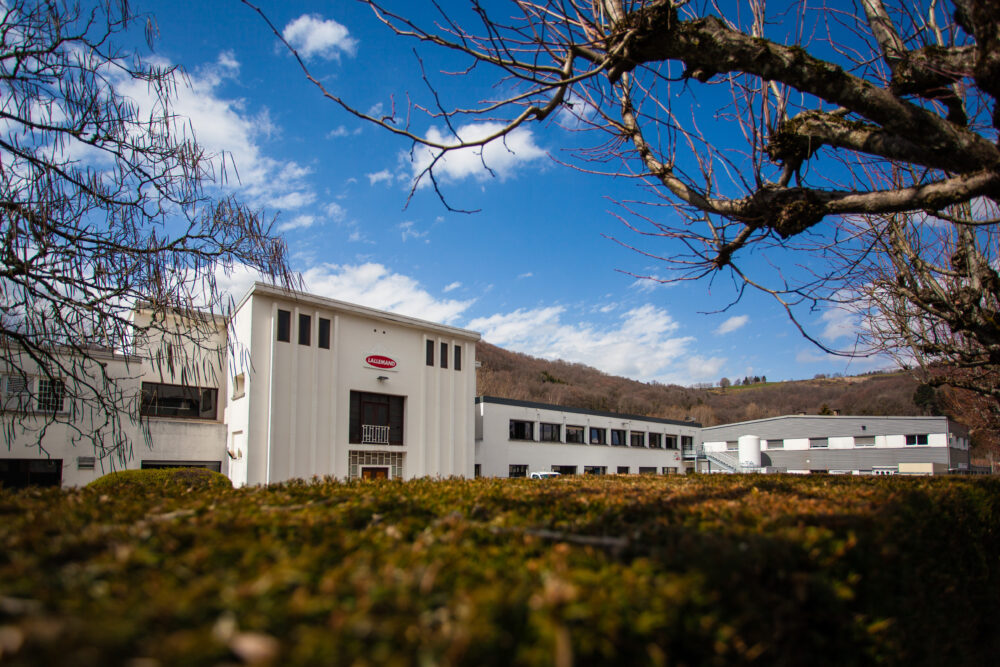Lallemand Inc.
Lallemand was founded in Montreal at the end of the 19th century by a young immigrant from Alsace, France: Fred Schurer who was nicknamed “Lallemand”, which is the French for “the German.” In 1923, Fred started producing baker’s yeast in the Préfontaine Street plant in Montreal, which is still in operation today, to supply the North American baking industry.
The Chagnon family acquired Lallemand in the 1950’s, diversifying into the production of specific yeast and bacteria strains for baking, beer and cider brewing, oenology, spirits, biofuels, plant care, food, human health, pharmaceuticals, and animal nutrition.
With more than 5,000 employees around the world, the Lallemand group has an active business presence on all five continents.
Lallemand Oenology
We are the Lallemand experts in wine microbiology and fermentation.
We have been involved in the wine industry since the early 1970’s when we partnered with Scott Labs in the United States to produce our first wine active dry yeast. Following the success of this production, more wine yeasts were investigated with various institutes and produced.
From 1980 to 1983, Lallemand made new contacts in the European wine world to study yeast strains selected by recognised research institutes.
In the late 1980’s, the acquisition of a lactic acid bacteria production plant in Aurillac (France) allowed us to develop new and specific bacteria strains for the malolactic fermentation of wine.
Short after, we acquired the expertise to produce yeast fractions, enabling us to diversify our offer to yeast and bacteria nutrients, yeast protectants and specific inactivated yeasts for every step of the vinification process from vine to bottle.


Since then, Lallemand Oenology has continued its development and is acknowledged as a pioneer for the wine industry globally.
Today, our catalogue features more than 300 wine yeast strains (Saccharomyces and non-Saccharomyces), 30 strains of wine bacteria (Oenococcus oeni and non-Oenococcus) and other microbiological solutions such as specific yeast derivatives, yeast and bacteria nutrients, chitosan-based products and enzyme formulations, with the constant objective to better control fermentation and improve wine quality, in ever-changing markets.
Our major milestones and breakthroughs for the wine industry
- 1974: First ever wine active dry yeast produced by Lallemand for Scott Laboratories (Saccharomyces cerevisiae)
- 1980: Introduction of the first wine active dry yeast with the killer factor, today known as competitive factor (“Killer K2”) active
- 1985: 1st complex nutrients based on inactivated yeasts
- 1989: Introduction of the 1st freeze-dried wine bacteria for sparkling wines (Oenococcus oeni) on the market – still a Lallemand distinctive expertise
- 1990: 1st to introduce the concept of characterising wine yeasts on the basis of their nitrogen requirements, to ensure the proper management of alcoholic fermentation
- 1996: Our 1st wine bacteria for direct inoculation process
- 2000: Introduction of the 1st specific inactivated yeasts in winemaking, to enhance colour and mouthfeel from the early stages of the vinification process
- 2000: Introduction and promotion of the co-inoculation practice (addition of wine bacteria 24/48 hours after wine yeast inoculation) for still wines
- 2002: Introduction of 1st protector to rehydrate active dry yeasts (patented) and optimise yeast vitality and viability thanks to survival factors
- 2003: Our first non-oenococcus wine bacteria tolerating alcohol to carry out MLF in medium to high pH wines (patented)
- 2004: Introduction of the 1st specific inactivated yeasts rich in glutathione to prevent must and wine oxidation (patented)
- 2007: Introduction of the 1st yeast nutrient 100% organic nitrogen
- 2009: Our 1st non-Saccharomyces wine active dry yeast to enhance wine aromatic and mouthfeel complexity
- 2012: Introduction of the 1st low SO2, low H2S and low acetaldehyde wine active dry yeasts selected with QTL innovative approach (patented)
- 2014: Development of our 1st inactivated yeasts to apply in the vineyard and improve wine quality (patented)
- 2014: Introduction of the 1st selected wine active dry yeast (Saccharomyces cerevisae) with unique fermentative properties, naturally increasing acidity in wine and potentially producing lower alcohol (patented)
- 2015: Introduction of a new generation of Lactiplantibacillus plantarum able to achieve a very fast MLF without any risk of VA production
- 2015: Introduction of the 1st yeast cell walls produced from wine yeasts, still unique on the market
- 2016: Introduction of the 1st fungal based antibacterial agent, 100% Aspergillus niger, as an alternative to SO2
- 2016: Introduction of the 1st specific inactivated antioxidant yeast as an alternative to SO2 addition, to protect wine from oxidation during storage and transportation (patented)
- 2019: Introduction of a unique inactivated yeast, with the richest glutathione content and other nucleophilic compounds to protect white and rosé wine from oxidation at the very early stages of the vinification process (patented)
- 2020: Our 1st yeast protein extract for fining
- 2022: Introduction of the 1st micro-agglomerated yeast protectant with very a high content of bioavailable sterols to speed up the rehydration of wine yeast at cool temperature and guarantee yeast fermentative and sensory potential (patent pending)
- 2023: Introduction of the 1st yeast specifically selected for revealing thiols in red wines